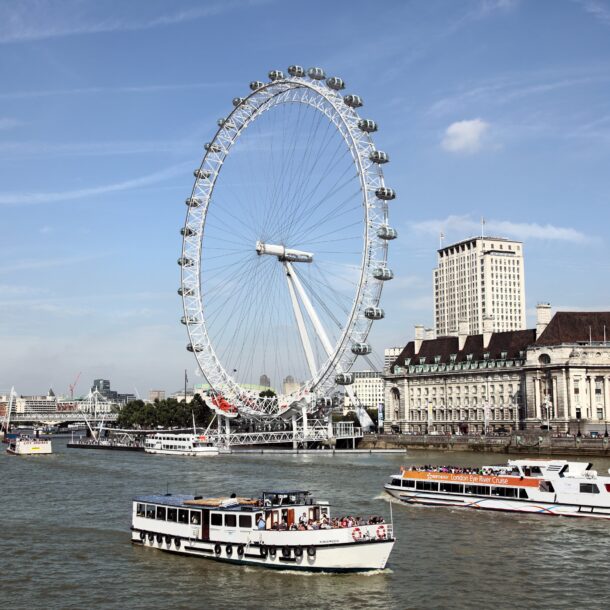
When in Rome
Rome fascinates and startles; like a dazzling jewel, the fascination with Italian cuisine, fashion, and cultural icons draws hordes to the Italian capital. From the buzzing vespas and honking taxis to the grand and colossal and unmistakably charming Colosseum, Rome’s districts and sun-drenched streets are filled with unique cultural landmarks and monuments at every twist and turn. On a bright summer day, a stroll through Rome reveals the hidden and fascinating icons of the Eternal City in all its glory. After all, what’s not to love about Rome?
There are several sights worth exploring. Consider the Colosseum and then venture out to the Trevi fountain as you take in your surroundings; continue your journey to Trastevere, a former working-class district, now one of the trendiest neighbourhoods in town. Unlike other towns, Trastevere is quiet and less chaotic. Notable locations like the Colosseum and the Vatican are within a 30-minute walking distance.
The favourite Italian pastime of wandering aimlessly can yield rich sightseeing rewards; just ensure you have comfortable walking shoes to withstand Rome’s notoriously cobblestoned roads. Once you venture out, you will come across Rome’s rich historical and cultural icons; these include millennia of art, architecture, and history. You will also come across Rome’s boutiques, designer shops, tasty pizzerias with specialty toppings, and gelato shops.
Italian streets and districts are a contrast of sorts; one minute, you will walk across residential streets with draped balconies and laundry hanging from window sills; and next, you will venture across Rome’s opulent squares with baroque architecture, obelisks, and grand fountains. This unique contrast makes Rome one of the most exciting and inspiring places to visit.
Of course, one cannot visit Rome without paying a quintessential visit to the all-time favourite Trevi fountain. The fountain is 85 feet tall and 65 feet wide, with water pumping from all sides. The fountain is estimated to gush about 2,824,800 cubic feet of water daily. Nothing goes to waste; the water is continuously recycled. Trevi is an icon for Italians; several movies were filmed here, including the notoriously famous La Dolce Vita. The iconic fountain was featured in other movies like Roman Holiday, Three Coins in the Fountain, and Lizzie McGuire.
Trevi is also known for its coin-tossing legend; word has it that if you toss a coin using your right hand over your left shoulder and toss a coin into the fountain, you are destined to return to Rome; tossing two coins means you will return and fall in love, and three will get you married as well. The municipality of Rome collects the coins daily from the fountain for charity.
Monumental Rome
Rome is packed with historical hangouts; after all, it is one of the most recognized lands in the world for its legendary landmarks and historical artifacts. Rome’s Pantheon is an ideal example; the Roman temple dedicated to the gods of pagan Rome is one of the oldest in the world. In the 7th century, it was used as a Roman Catholic church and was infamously known for its grand architectural design featuring marble floors and a series of geometric designs and patterns reminiscent of ancient Rome’s magnificent structure. One of the Pantheon’s most recognized architectural features is its dome. The dome was constructed using single casting of concrete. The Oculus is at the centre of the dome, providing much-needed sunlight to the Pantheon since it lacks windows.
Another unique Italian landmark is Piazza Navona, best known for its Baroque architecture and the Fountain of the Four Rivers. Piazza Navona is buzzing all year round. The Piazza is known for multitudes of artists who come here from all corners of the globe to paint Rome’s architectural sites and landmarks. Tourists also descend on the piazza in droves to explore its attractions, including its fountains, palaces, churches, cafes, and distinct restaurants.
The Spanish Steps
One of Rome’s most fascinating attractions is the Spanish Steps; the name sounds misleading because the commission to finance their construction did not come from the Spanish. The steps are a prime spot for people watching because they attract a crowd, not just any crowd, but a good-looking one too. For decades the 135 steps were known to be a favourite spot among tourists and young Italians to relax and enjoy the passing scenery of Rome’s bustling scenery from its perch. Every July, the steps are decorated to receive multiple fashion shows. Decades of heavy use had their toll on the steps; a restoration project in 2016 was initiated to clean and renovate them to their former glory, and they are now in better shape than ever before.
The Vatican and Colosseum
The Vatican is Rome’s top monumental and religious attraction. Considered the centre of authority for the Roman Catholic church, tourists and pilgrims assemble here to worship and explore its galleries, museums, and priceless collection of religious manuscripts and books. The Vatican is an independent City State located in the heart of Rome ruled by the Pope; in this small state, the Pope resides and is surrounded by the Apostolic Palace and the gardens. Other attractions within considerable reach include St Peter’s Square, St Peter’s Basilica, the Vatican museum, and the Sistine Chapel.
The Colosseum is unarguably Rome’s most remarkable icon and one of the world’s wonders. Construction of the Colosseum began under emperor Vespasian and was completed during the rule of emperor Titus. Its amphitheater was used as an entertainment venue to host gladiator fights, animal hunts, and mock naval battles. Currently, the Colosseum stands as one of Rome’s, if not the world’s, most outstanding architectural icons; it is also a major source of revenue for the Italian government. According to Italian tourism officials, over 6 million people visit it annually. Students from all over the world visit the Colosseum each year as part of their studies to the benefit of the country’s economy.
The best time to visit Rome is in summer.; however, spring has its blissful moments too, particularly when life returns to the sun-drenched streets and picturesque piazzas. The warm spring weather and the Italian sea breeze fill the atmosphere with a refreshing breeze along the coast. Italians flock to local markets overflowing with fresh produce like artichokes, asparagus, and fresh strawberries. Most importantly, this is the time for new beginnings and fresh starts before summer kicks in with its blazing heat when shops close and families prepare for the long summer vacations and flee to Italian cities like Tuscany, Florence, Milan, Lake Como, and Venice.
So there you have it; if you visit Rome, it will undoubtedly fascinate your senses and exceed your expectations. If you love walking, this is your city. As someone who never tires of exploring, you will enjoy getting lost in Rome’s districts, alleys, and side streets!



